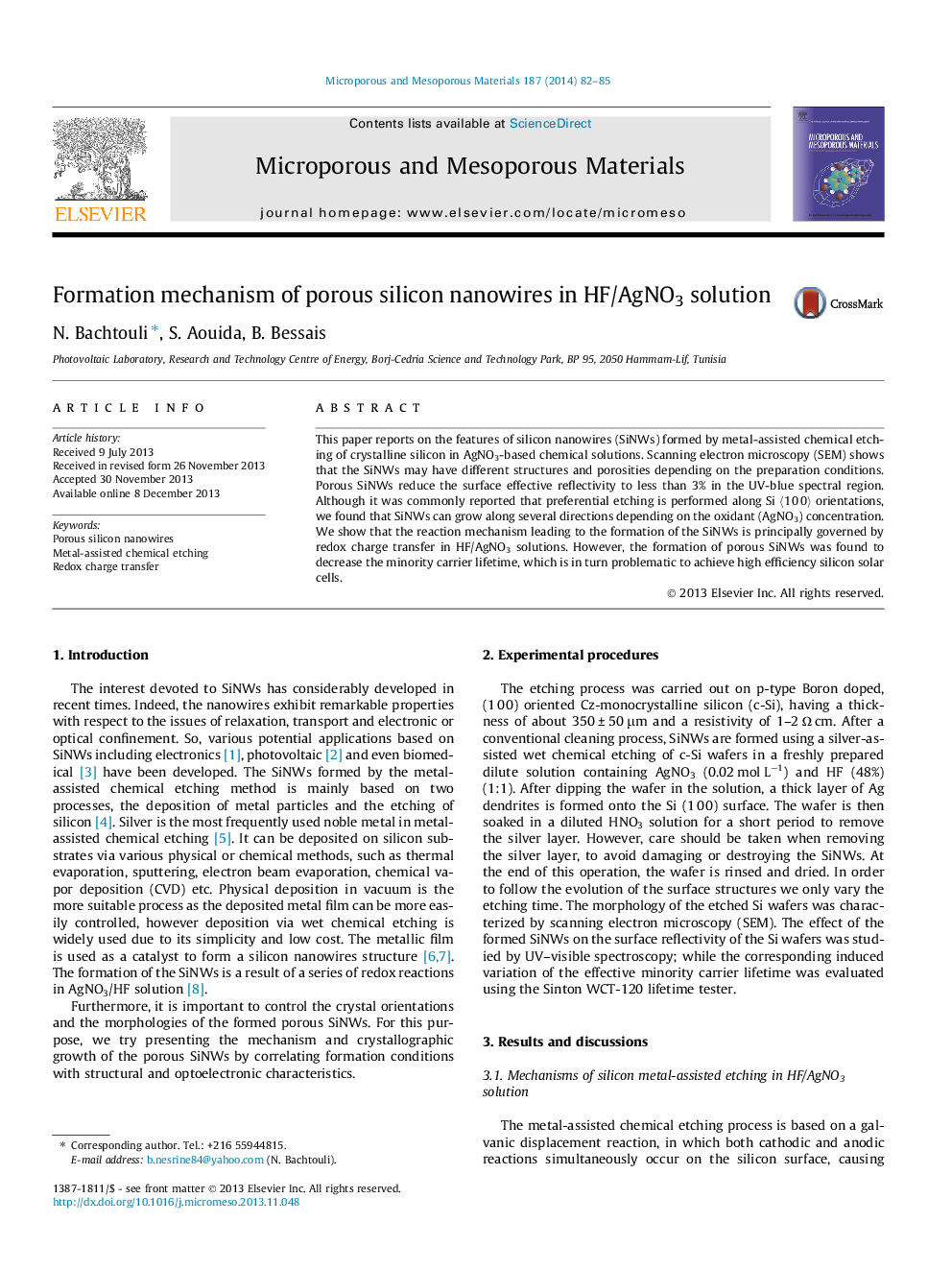| Article ID | Journal | Published Year | Pages | File Type |
|---|---|---|---|---|
| 73285 | Microporous and Mesoporous Materials | 2014 | 4 Pages |
•The metal-assisted chemical etching of c-Si leads to the formation of porous SiNWs.•The SiNWs formation is a result of a series of redox reactions in AgNO3/HF solution.•The formed silver particles regulated the sizes of SiNWs and their orientations.•The size, the porosity, and the reflectivity of the SiNWs depend on etching time.•The QSSPC measurement reveals a detorioration of the minority carrier lifetime.
This paper reports on the features of silicon nanowires (SiNWs) formed by metal-assisted chemical etching of crystalline silicon in AgNO3-based chemical solutions. Scanning electron microscopy (SEM) shows that the SiNWs may have different structures and porosities depending on the preparation conditions. Porous SiNWs reduce the surface effective reflectivity to less than 3% in the UV-blue spectral region. Although it was commonly reported that preferential etching is performed along Si 〈1 0 0〉 orientations, we found that SiNWs can grow along several directions depending on the oxidant (AgNO3) concentration. We show that the reaction mechanism leading to the formation of the SiNWs is principally governed by redox charge transfer in HF/AgNO3 solutions. However, the formation of porous SiNWs was found to decrease the minority carrier lifetime, which is in turn problematic to achieve high efficiency silicon solar cells.
Graphical abstractFigure optionsDownload full-size imageDownload as PowerPoint slide
